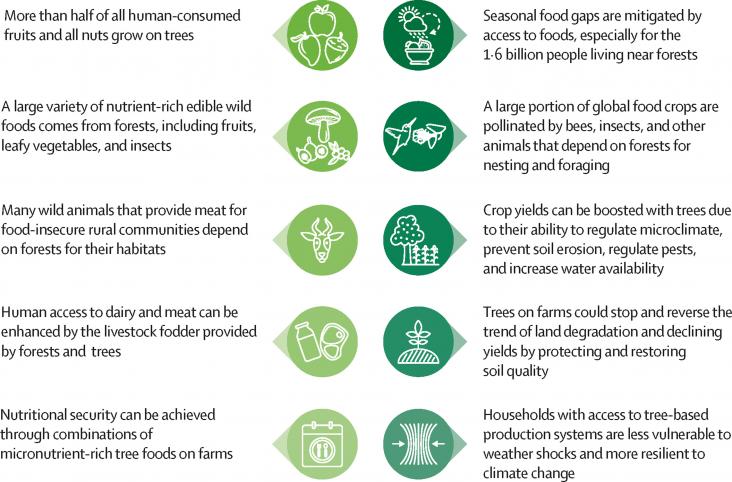Calculated emissions reductions possible through ecosystem restoration and shows they are insufficient to rely upon.
Supports SDG 15 by providing a methood to preserve wheat species for reintroduction if necessary.
This paper highlights the value of combining passive acoustic monitoring (PAM) recordings with machine-learning analysis for ecological monitoring and demonstrates the potential of PAM to monitor reef restoration.
Discusses how plant diversity may enhance carbon retention in soils as well as better ecosystem functions and crop yields.

This Viewpoint supports SDGs 2 and 15 by highlighting the importance of trees and forests to food systems, and exploring how the value of trees and forests in this regard can be enhanced to improve nutritional and environmental sustainability.

By studying species' responses to extreme climate events, a conceptual framework for predicting ecological recovery in terrestrial ecosystems is proposed.
This article supports SDG's 6, 11 and 15 through its discussion of the use of Phytoremediation as an economical and sustainable technology for environmental cleanup. Plant species known to utilize different phyto-mechanisms during phytoremediation of diverse pollutants are presented
RELX SDG Customer Awards aim to recognise RELX customers who share our commitment to driving action in support of the United Nations Sustainable Development Goals. Read more about the 2022 winners.
The articles's focus on using Metal-Organic Frameworks (MOFs) to remove drugs and emerging pollutants from wastewater directly relates to several Sustainable Development Goals (SDGs). It particularly aligns with Goal 6 (Clean Water and Sanitation) by addressing the issue of water pollution and promoting the removal of harmful substances from aqueous environments. It also connects with Goal 14 (Life Below Water) and Goal 15 (Life on Land) by aiming to protect ecosystems and aquatic life from the detrimental effects of drug pollution, ultimately contributing to environmental preservation and human well-being.
The purpose of this study is to quantify the joint impacts of climate and human activities on grassland changes in Three-River Headwater Region (TRHR) after two phases of Ecological Conservation and Construction Project (Ecological Project).
